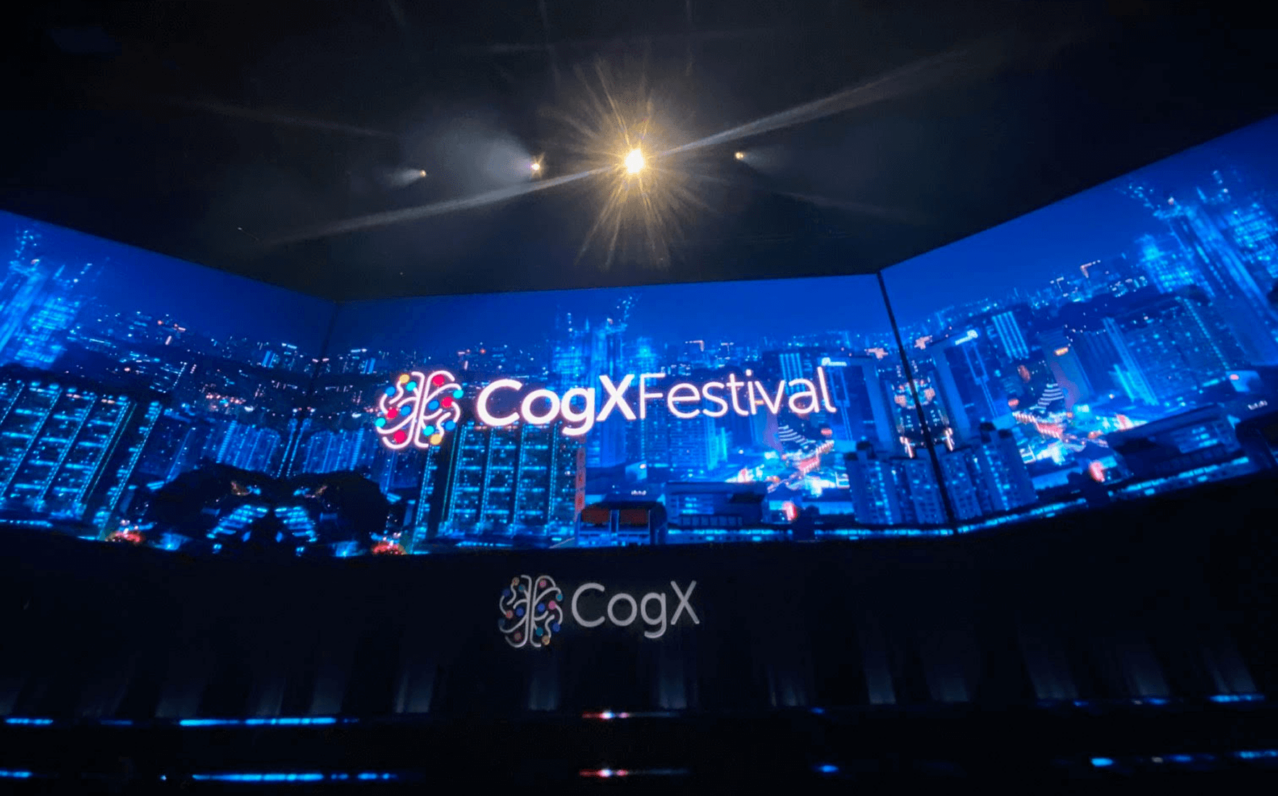
When we attended the CogX Festival in 2024, one discussion really stuck with me: Can AI ever truly tell a meaningful story?
Storytelling is at the heart of human connection. From ancient myths passed down through generations to the digital narratives that shape our world today, stories help us make sense of experiences, evoke emotions, and inspire action. But with AI now generating books, films, and marketing content, the question is whether machines can tell stories, but whether they can do it in a way that feels real, emotional, and human.
At CogX, Es Devlin, an award-winning artist and stage designer known for her breath-taking work with Beyoncé, U2, and the Olympics, and Karen Palmer, the “Storyteller from the Future,” whose AI-driven films adapt in real time to the viewer’s emotions, explored this subject. They delved into how AI is reshaping storytelling—does it lack the emotional depth that makes narratives powerful, or can human creativity and AI work together to unlock new storytelling possibilities?
It’s a debate with huge implications, not just for artists and filmmakers but also for brands and marketers. So, is AI the next great storyteller or just a clever mimic?
Let’s explore…
Stories are powerful because they make us feel something. A film that leaves you speechless, a novel that lingers in your mind, a personal story that hits you right in the gut—that’s the power of human storytelling. It’s how we connect, relate, and make sense of the world.
At its core, great storytelling is built on:
AI, for all its capabilities, doesn’t have any of this. It can structure a story, but it doesn’t feel like it. It doesn’t know love, loss, or nostalgia – and that’s what makes human storytelling irreplaceable.
For example, A human storyteller understands the emotional weight of a farewell scene between two lovers. AI? It doesn’t know heartbreak—it just pulls from patterns. It knows what sadness looks like, but not what it feels like.
The bottom line? AI can churn out stories, but it can’t replace the raw emotional intelligence that makes them truly powerful. It’s a tool, not the storyteller. The heart of a great story will always be human.
AI storytelling has come a long way. Tools like ChatGPT, DALL·E, and Adobe Firefly can now generate scripts, visuals, and even full narratives in minutes. It’s impressive—but does that mean AI can truly replace human storytellers?
Here’s the thing: AI doesn’t feel emotions—it mimics them.
That’s the key difference. AI can assist, enhance, and even inspire, but the soul of storytelling? That’s something only humans bring to the table.
AI isn’t here to replace human storytellers but to amplify creativity. Some of the most exciting artistic projects today don’t fight AI against human creativity but blend the two to create something new.
One of the most inspiring examples is Karen Palmer, a visionary artist known as the “Storyteller from the Future”. Instead of using AI to generate stories, she explores the interplay between human emotions and technology, crafting immersive experiences that challenge how we think, react, and engage with narratives.
Palmer’s projects go beyond passive storytelling—they react to the viewer in real time. Her work forces us to question our own perceptions, biases, and the role AI plays in shaping our experiences. Here are examples of two of her projects:
Why This Matters
Palmer’s work shows that AI storytelling doesn’t have to feel robotic or lifeless. Instead, when used with intention, AI can become a powerful creative tool that:
Her work proves that AI doesn’t have to replace human storytelling—it can challenge and enhance it in ways we never imagined.
At its best, AI isn’t a replacement for human storytelling—it’s a new canvas. For brands, marketers, and creatives, the real opportunity lies in harnessing AI to enhance, not replace, the human touch.
AI can spark ideas, generate visuals, and format content in seconds—but the heart of a great story still comes from human experience. A powerful narrative isn’t just well-structured—it’s something you feel.
For brands using AI to streamline content, authentic storytelling should always come first. No matter how advanced AI gets, audiences don’t connect with automation—they connect with emotion, vulnerability, and fundamental human moments.
The creatives who see AI as a collaborator, not a competitor, will be shaping the future of storytelling. AI can scale content, enhance visuals, and optimise engagement, but without human creativity, it’s just words and pixels. It takes a human touch to make a story genuinely resonate.
At Brightful, we don’t see AI as a replacement for creativity—we see it as a tool to elevate storytelling and content creation. We consult on and implement cutting-edge tech to help brands create stories that truly engage, inspire, and connect on a human level.
Curious about how AI can enhance your brand’s storytelling? Let’s chat about blending human creativity with AI innovation to create something meaningful. The future of storytelling is evolving—let’s shape it together.